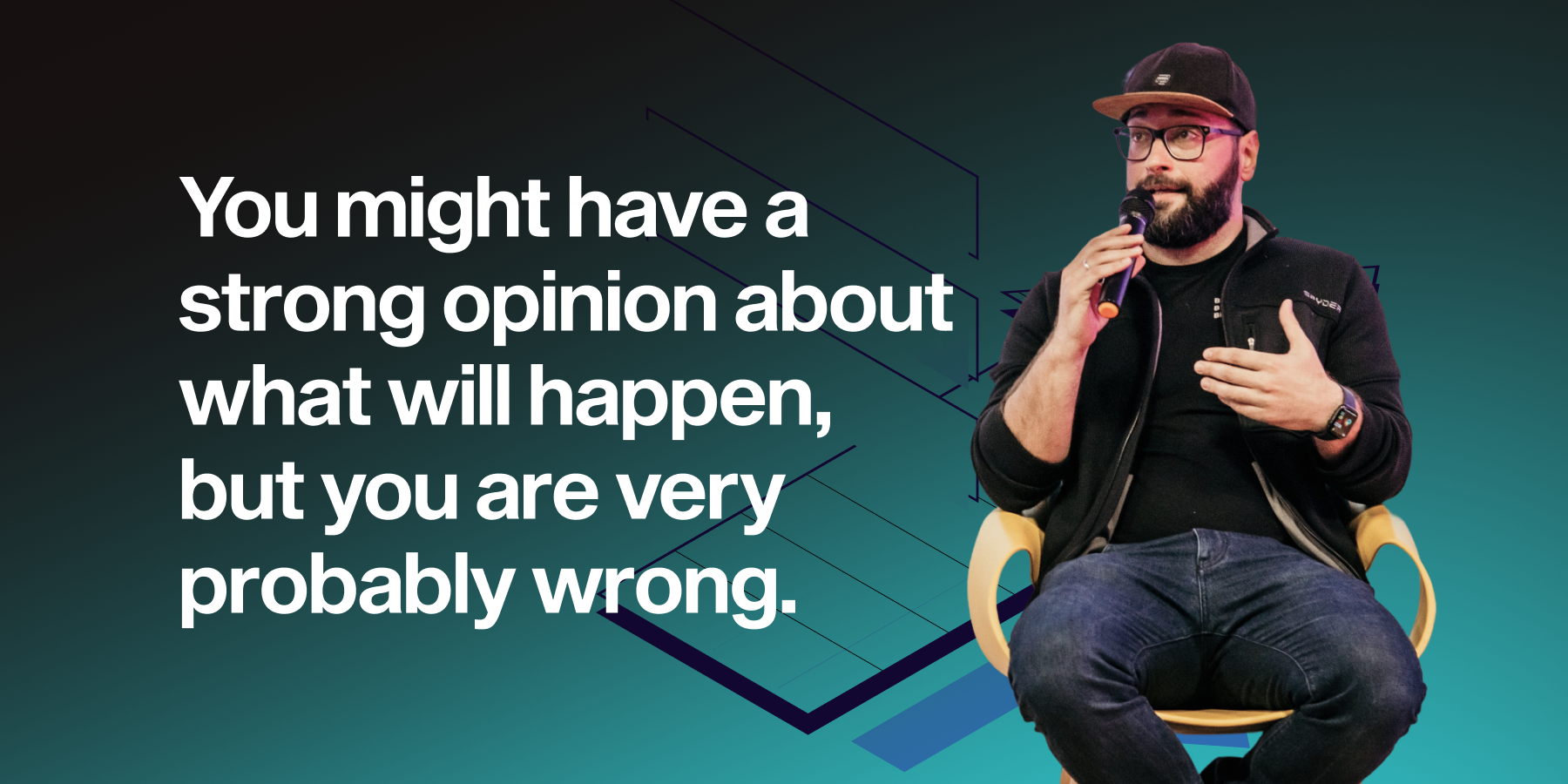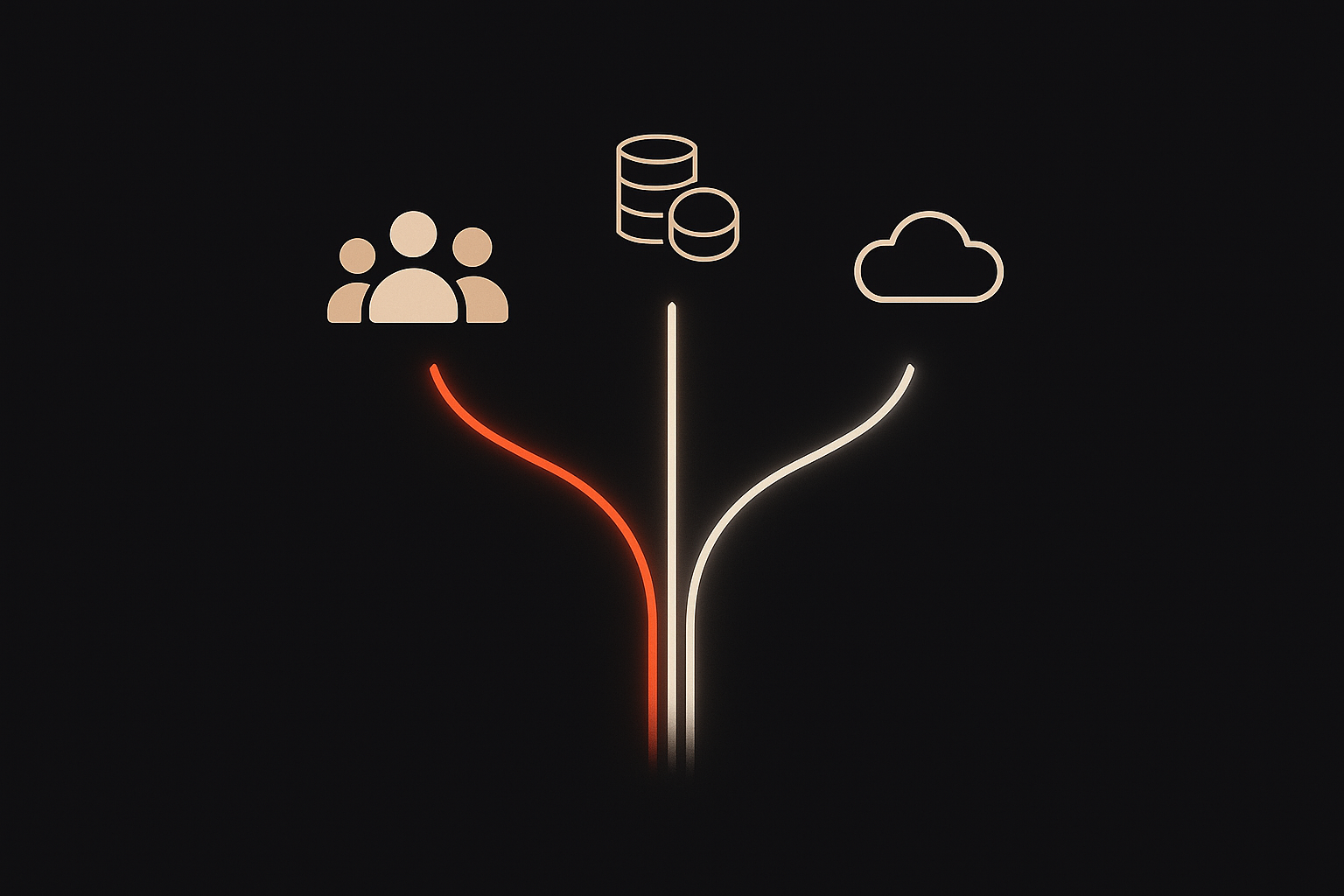Remote-First, Outcome-Obsessed: How Startup Founders Can Master Agile Product Development with Distributed Teams

Remote teams aren't just a pandemic trend, they're the new normal for ambitious startups aiming to build agile, scalable products. But here's the truth: most founders are doing it completely wrong. They're slapping a few Zoom calls on their calendar, hoping for the best, and wondering why their distributed team feels more like a liability than an asset.
The reality?
Managing a distributed team for agile product development isn't about geography; it's about rethinking your entire approach to recruitment, communication, process, and measurement. It's about understanding that remote work doesn't kill productivity; bad leadership does. And it's about recognizing that in a world where the top 1% of talent isn't sitting in your city waiting for your job posting, distributed teams aren't just an option - they're your unfair advantage.
In this article, I'll cut through the Silicon Valley myths, share battle-tested strategies from the trenches, and show you how to turn remote work from a necessary evil into your startup's secret weapon. Because the question isn't whether you should build remotely - it's whether you can afford not to.
Myth-busting Remote Teams: Why Most Founders Get It Wrong
Most VCs actively promote the idea that you MUST have a local team in your city and that you shouldn't outsource/contract any work to external companies or individuals. The idea is to hire a few developers in a few weeks, sit together in a living room (or coworking space) and get shit done.
You are probably wrong about remote teams.
Unless you are extremely well connected and persuasive, the odds are against you. Hiring the top 1% in San Francisco or Stockholm? That's a fantasy for most startups. Even if you decide to recruit internally, the cycle time can be anywhere from 1 to 9 months if you have any decent quality criteria. Very often it's closer to the upper limit.
Remote will happen, regardless of internal or external teams.
Your internal team will most likely expect remote work benefits anyway. If your goal is to build a global company, there is no reason to not start right away by having a distributed team.
The truth is, any remote work issues are just disguised operational issues. It's the tip of the iceberg of a bad operational and communication process. It doesn't have anything to do with remote work.
Remote just makes other issues more visible.
For example, if you don't write meeting notes after meetings, it's something that can have no consequences in an internal office culture, since you can catch-up at the watercooler. However, this is a big issue for a remote team, since it will be out of sync. Is this a problem of remote? No. It's just a lack of good process around sharing information.
Cloud systems have an amazing feature called auto-scaling. This concept can be applied to recruitment too. Your startup team's fixed salaries are a liability and you can't guarantee your whole team will be fully utilized. Having a contracted team enables auto-scaling. Save money. Live long.
Recruitment and Team Design: Build for Flexibility, Not Fantasy
Here's where most founders lose the plot entirely. They get seduced by the Silicon Valley mythology of hiring the "best and brightest" locally, building their dream team in a garage, and scaling from there. But this approach ignores a fundamental reality: hiring the top 1% locally is a fantasy for most startups.
Even if you decide to recruit a developer or designer internally, the cycle time can be anywhere from 1 to 9 months if you have any decent quality criteria. Very often it's closer to the upper limit. Meanwhile, your runway is burning, your competitors are shipping, and you're stuck in recruitment hell.
It's about the outcomes
What is the outcome you want to achieve as an early-stage startup? I believe that the first outcome you want to achieve is to launch your product (prototype) as soon as possible and collect feedback to decide whether to pivot or persevere. You should have a 4-6 week release cycle for the MVP and a good approach to get first users and collect data.
Do you need a fully local team for this? No.
Your team is just a mechanism to get things done until you figure out your product-market fit and you have enough runway to think about company-building. Focus on the right things first.
The T-shaped advantage
A high-performing team is a composition of T-shaped individuals that fill all the gaps in an organization. What happens when there's no work on the front-end? What if a DevOps engineer is on vacation? A layered organization that doesn't have full-stack developers produces huge amounts of waste over time.
Remember, fixed costs (mainly salaries) kill companies. Having a contracted team enables auto-scaling. Depending on the runway you have and the roadmap, you can increase or decrease the number of team members dynamically.
This isn't about cutting corners, it's about strategic resource allocation. The best remote teams understand that flexibility isn't just nice to have; it's essential for survival in the startup world where everything changes every six weeks.
Operational Discipline: Process Is Your Real Culture
Remote work doesn't kill productivity. Bad process does. The truth is, any remote work issues are just disguised operational issues. It's the tip of the iceberg of a bad operational and communication process. Remote just makes other issues more visible.
For example, if you don't write meeting notes after meetings, it's something that can have no consequences in an internal office culture, since you can catch-up at the watercooler. However, this is a big issue for a remote team, since it will be out of sync. Is this a problem of remote? No. It's just a lack of good process around sharing information.

The Daily Discipline That Changes Everything
When we introduced daily commits at Ministry of Programming, we explained it as a continuous integration best practice. But here's what we discovered: daily commits are really about building a discipline of continuous delivery and transparency. A well-crafted commit is pure user or business value packaged as a chunk of code - with a clear link to business value, good documentation, and automated tests that make it immediately releasable.
The devil is in the details. Your remote team needs to see frequent, meaningful progress. Without daily commits, there's no daily build. Without daily builds, there's no continuous delivery. Without continuous delivery, you're just hoping your distributed team stays aligned.
This isn't micromanagement, it's creating visibility and accountability that benefits everyone. When your team is spread across time zones, these small disciplines become the connective tissue that keeps everyone moving in the same direction.
Design Your Virtual Workspace Like Your Code
Using Slack all day is the equivalent of a virtual open office, which is sub-optimal for deep work. Map your activities to the right virtual environments: async documentation for decisions, sync video for co-creation, written updates for status, verbal discussion for problem-solving.
The best remote teams understand that different types of activities require different digital environments - just like you wouldn't write code in a meeting room. Process is your real culture when your team is distributed across time zones.
Think of your virtual workspace architecture the same way you'd think about your software architecture. Different tools for different jobs, clear interfaces between systems, and redundancy where it matters most.
Measuring What Matters: Productivity Beyond Vanity Metrics
Let me share a story that taught us an expensive lesson about over-relying on simple metrics.
A few years ago, we introduced daily commit frequency as one of our performance review criteria. The intention was good - we wanted to encourage continuous integration and regular code shipping. However, one senior developer started breaking up their work into tiny commits. Instead of making meaningful integration points, they'd commit minor changes separately - a variable rename here, a formatting change there. Their commit graph looked amazing, a sea of green squares on GitHub. During their performance review, the numbers looked fantastic.
But when we dug deeper, we discovered that while the commit count was high, the commits were highly manipulated and there was no real value in many of them, defeating the whole point of continuous delivery.
This experience taught us that even well-intentioned metrics can be counter-productive when used in isolation. The devil is in the details - a daily commit that is not crafted properly is not real value, but noise and overhead.
The truth is, measuring developer productivity goes well beyond commits and PRs. You need frameworks that capture the full picture:
- DORA metrics measure outcomes, not just activity - deployment frequency, lead time for changes, change failure rate, and time to restore service
- SPACE framework adds the missing human element - satisfaction, performance, activity, communication, and efficiency
- DX Core 4 balances speed, effectiveness, quality, and impact to prevent gaming any single metric
It's about the outcomes.
The next time you're tempted to measure productivity by counting lines of code or commits, step back and ask: Are we measuring what matters, or just what's easy to measure?
Real productivity isn't about how much you produce - it's about how much value you create for a customer. This becomes even more critical with remote teams, where visibility into daily work requires more intentional measurement and communication.
Founder Mindset: Embrace Chaos, Deliver Outcomes
As a founder managing remote teams, you need to understand something fundamental: startups are the complete opposite of clean code. They exist in a non-deterministic environment where competitors, customers, and market conditions shift unpredictably. You might have a strong opinion about what will happen, but you are very probably wrong.
The truth is, many founders get caught up in creating perfect processes and documentation when they should be focused on one thing: launching your product as quickly as possible and collecting feedback to decide whether to pivot or persevere. Your remote team isn't there to execute a flawless plan—it's there to help you navigate uncertainty and discover what actually works.
Here's what separates successful remote startup teams from the rest:
Bias toward action over analysis paralysis.
When faced with complex product decisions, resist the urge to spend weeks gathering requirements or creating detailed specifications. Build a simple action plan and execute efficiently using your team's diverse strengths. Remember: iterating and releasing is the difference between hypothesis and truth.

Focus on outcomes, not headcount.
Every startup has three key problems: Recruitment, Product, and Fundraising. I would always choose Product and Fundraising because without a sustainable product, there's no point in having any team. Your team is just a mechanism to get things done until you figure out product-market fit.
Align incentives with reality.
The truth is, very few people will work super-hard without the right incentives unless they have extreme intrinsic motivation. Who prohibits you from giving equity to contracted teams or freelancers? You'll get similar results as with a local committed team—it's about leadership and sharing future gains.
Embrace the chaos.
Chaos is where order can set in, and you can be the person to bring order to a new business. That's the biggest opportunity of your career, and it's much easier as employee number 3 than employee 56,211.
Your job isn't to eliminate uncertainty - it's to navigate it faster than your competition. Remote teams, when managed properly, give you the agility and cost structure to do exactly that.
Conclusion
Managing remote teams for agile product development isn't about copying Silicon Valley or chasing the latest tool. It's about ruthless focus on outcomes, operational discipline, and building a culture where remote work is a feature, not a bug.
The founders who succeed understand that remote isn't just about geography, it's about creating systems that work regardless of where your team sits. It's about measuring what matters, not what's easy to count. It's about building flexibility into your team structure so you can scale up or down based on reality, not fantasy.
As a founder, your job is to cut through the noise, challenge the myths, and architect a team that can deliver value—no matter where they are. Embrace the chaos, measure what matters, and remember: remote is just the tip of the iceberg. The real differentiator is how you lead, learn, and execute. Your distributed team isn't a compromise—it's your competitive advantage.
Ready to decide whether to pivot or keep iterating with confidence?
FAQs About Product Pivot and Iteration Decisions
How long should I try iterating before considering a pivot for my MVP?
Allow at least three months of consistent iteration attempts with clear metrics tracking before evaluating pivot options.
What specific metrics indicate my startup should pivot rather than iterate?
Persistent churn above 80% monthly, activation rates below 15%, and LTV:CAC ratios under 1:1 for three consecutive months signal pivot consideration.
Can I test a potential product pivot without abandoning my current users?
Run parallel experiments with a small team while maintaining your existing product for current customers during the validation phase.
How do I communicate a product direction change to existing customers without losing trust?
Explain the specific problems the change solves for them, provide transition support, and offer alternatives if the new direction doesn't serve their needs.